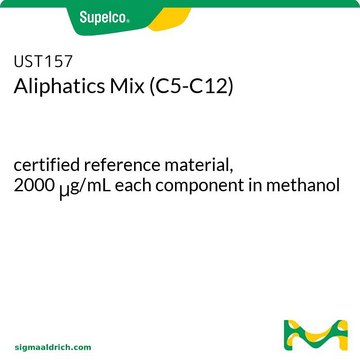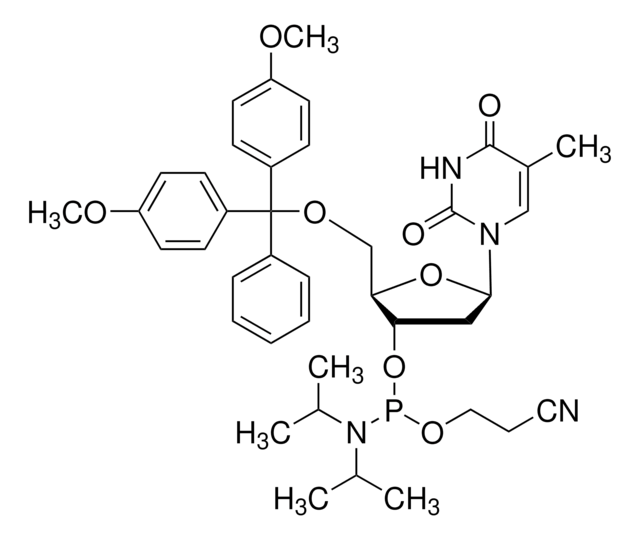1.01126
Dihidrogenofosfato de amonio
for analysis EMSURE® ACS,Reag. Ph Eur
Sinónimos:
Dihidrogenofosfato de amonio
About This Item
Productos recomendados
grado
ACS reagent
Nivel de calidad
Agency
reag. Ph. Eur.
presión de vapor
0.066 hPa ( 125 °C)
Línea del producto
EMSURE®
Análisis
≥99.0% (acidimetric)
formulario
solid
potencia
5750 mg/kg LD50, oral (Rat)
>7940 mg/kg LD50, skin (Rabbit)
impurezas
≤0.005% Insoluble matter
pH
3.8-4.4 (20 °C, 50 g/L in H2O)
mp
190 °C
densidad
1.80 g/cm3 at 20 °C
densidad aparente
800‑1100 kg/m3
trazas de anión
chloride (Cl-): ≤0.0005%
nitrate (NO3-): ≤0.001%
sulfate (SO42-): ≤0.005%
trazas de catión
Ca: ≤0.001%
Fe: ≤0.001%
K: ≤0.005%
Mg: ≤0.0005%
Na: ≤0.005%
heavy metals (as Pb): ≤0.0005%
temp. de almacenamiento
2-30°C
InChI
1S/H3N.H3O4P/c;1-5(2,3)4/h1H3;(H3,1,2,3,4)
Clave InChI
LFVGISIMTYGQHF-UHFFFAOYSA-N
¿Está buscando productos similares? Visita Guía de comparación de productos
Categorías relacionadas
Aplicación
- Síntesis y caracterización de nanopartículas de hidroxiapatita a partir de hidróxido de calcio contaminado con gases emitidos por chimeneas de la industria del vidrio: se explora la síntesis de nanopartículas de hidroxiapatita utilizando dihidrogenofosfato de amonio, detallando el proceso y las técnicas de química analítica involucradas. El estudio proporciona información sobre las posibles aplicaciones medioambientales e industriales de este método, ofreciendo un enfoque innovador para la síntesis de materiales (Abdelmoaty y Mousa, 2024).
- Nanocorte inducido por grabado con ácido de un nanoreactor de LaNiO(3)/N,P-rGO autoensamblado con forma de matriz de fotodiodos trasplantados de LaNiO(3) para una eficiente evolución fotocatalítica del hidrógeno: se discute el uso de dihidrogenofosfato de amonio en la creación de nanoreactores basados en LaNiO(3) a través de técnicas de grabado ácido. Los materiales resultantes muestran aplicaciones prometedoras en la fotocatálisis y la producción de hidrógeno, lo que ilustra la utilidad del compuesto en tecnologías de energía renovable (Zou et al., 2024).
- Síntesis sostenible y ecológica en microondas de nano-hidroxiapatita a partir de cáscaras de huevo descarbonizadas: se utiliza dihidrogenofosfato de amonio en un proceso de química verde para sintetizar nano-hidroxiapatita a partir de cáscaras de huevo, enfatizando los beneficios ambientales y la sostenibilidad de este enfoque en la ciencia de los materiales (Mahmoud, 2024).
- Sensor bioquímico autoalimentado para la agricultura inteligente habilitado por un nanogenerador triboeléctrico con señal mejorada: en esta innovadora investigación se utiliza dihidrogenofosfato de amonio en el desarrollo de un sensor bioquímico autoalimentado para aplicaciones agrícolas, destacando su papel en la mejora de la sensibilidad y la sostenibilidad de los dispositivos (Gao et al., 2024).
- Control terapéutico de la vancomicina en pacientes quirúrgicos mediante un método de HPLC validado: en este ensayo clínico, el dihidrogenofosfato de amonio se emplea como parte de un método de cromatografía de líquidos de alto rendimiento (HPLC) para supervisar la vancomicina en pacientes quirúrgicos, demostrando su papel crucial en la mejora de la precisión analítica y la atención al paciente (Akram et al., 2024).
Ligadura / enlace
Nota de análisis
Materia insoluble: ≤ 0,005 %
Valor de pH (5 %; agua, 25 °C): 3,8 - 4,4
Valor de pH (2,3%; agua): aprox. 4,2
Cloruros (Cl): ≤ 0,0005 %
Nitratos (NO₃): ≤ 0,001 %
Sulfatos (SO₄): ≤ 0,005 %
Metales pesados (como Pb): ≤ 0,0005 %
Ca (Calcio): ≤ 0,001 %
Fe (Hierro): ≤ 0,001 %
K (Potasio): ≤ 0,005 %
Mg (Magnesio): ≤ 0,0005 %
Na (Sodio): ≤ 0,005 %
Se ajusta a ACS, React. Ph Eur
Información legal
Código de clase de almacenamiento
13 - Non Combustible Solids
Clase de riesgo para el agua (WGK)
WGK 1
Punto de inflamabilidad (°F)
Not applicable
Punto de inflamabilidad (°C)
Not applicable
Listados normativos
Los listados normativos se proporcionan para los productos químicos principalmente. Para los productos no químicos sólo se puede proporcionar información limitada. Si no hay ninguna entrada, significa que ninguno de los componentes está en la lista. Es obligación del usuario garantizar el uso seguro y legal del producto.
EU REACH Annex XVII (Restriction List)
Certificados de análisis (COA)
Busque Certificados de análisis (COA) introduciendo el número de lote del producto. Los números de lote se encuentran en la etiqueta del producto después de las palabras «Lot» o «Batch»
¿Ya tiene este producto?
Encuentre la documentación para los productos que ha comprado recientemente en la Biblioteca de documentos.
Los clientes también vieron
Nuestro equipo de científicos tiene experiencia en todas las áreas de investigación: Ciencias de la vida, Ciencia de los materiales, Síntesis química, Cromatografía, Analítica y muchas otras.
Póngase en contacto con el Servicio técnico








